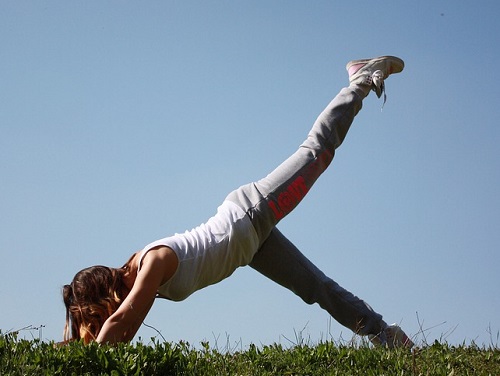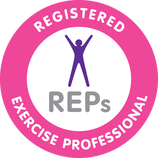This is a question I get asked a lot. It’s too often assumed that everyone knows where their core is and what muscles combine to form it, but I’ve found that many people don’t have a clue! So I’ll try to explain.
The muscles that make up the core are:
TA (Transverse abdominal) muscles — corset-like muscles that wrap around the centre of the body
Multifidus — muscles that run down the length of the spine
Pelvic Floor — a sling of muscle that runs from the front of the pelvis to the lower part of the spine
Diaphragm — the muscle that lies under the ribcage and helps us to inhale and exhale
The core is the mid-section of the body and is the support for the rest of the body. When we strengthen the core, we make it possible to support the whole body in every task we ask it to do — from carrying the shopping to mowing the lawn, from lifting a heavy box to running, cycling or working out in the gym.
One of the most important functions of Pilates is that it concentrates on activating and strengthening the core muscles, specifically the TA muscles and the Pelvic Floor muscles. These two groups of muscles help to stabilise the body as we move.
Instructors in many classes, from what I gather, tell their participants to pull the core muscles in really tight. Don’t do it. Research has shown that this is not the best way to work these muscles; it is unsustainable over a long period of time, and many people don’t know how to effectively pull them in anyway!
The muscles that make up the core are:
TA (Transverse abdominal) muscles — corset-like muscles that wrap around the centre of the body
Multifidus — muscles that run down the length of the spine
Pelvic Floor — a sling of muscle that runs from the front of the pelvis to the lower part of the spine
Diaphragm — the muscle that lies under the ribcage and helps us to inhale and exhale
The core is the mid-section of the body and is the support for the rest of the body. When we strengthen the core, we make it possible to support the whole body in every task we ask it to do — from carrying the shopping to mowing the lawn, from lifting a heavy box to running, cycling or working out in the gym.
One of the most important functions of Pilates is that it concentrates on activating and strengthening the core muscles, specifically the TA muscles and the Pelvic Floor muscles. These two groups of muscles help to stabilise the body as we move.
Instructors in many classes, from what I gather, tell their participants to pull the core muscles in really tight. Don’t do it. Research has shown that this is not the best way to work these muscles; it is unsustainable over a long period of time, and many people don’t know how to effectively pull them in anyway!
When I first started to teach Pilates we encouraged participants to “zip and hollow” — zip up the Pelvic Floor muscles and hollow the stomach by pulling the TA muscles in tight. Research now suggests that in order to be able to sustain the contraction of these muscles, we shouldn’t attempt to activate them any more than 30%. It’s also not productive to use both muscle groups together.
Activating the TA Muscles
If you haven’t tried to find your TA muscles before, it’s probably best if you do so while lying down on your back with knees bent, about a fist-width apart, with feet a comfortable distance away from the bottom. Rest the hands lightly on the belly and breathe deeply, feeling the belly rising and falling beneath the hands. Don’t worry if you find this a challenge; to begin with, many people find it difficult to breathe very deeply.
Once you start to feel your breath slowing down and deepening, you will feel a connection or contraction right at the end of the exhalation. If you breathe out all the way and contract the muscles as hard as you can, think of this as contracting to 100%. You should be thinking of trying to contract the muscles to 50%, then to 30% — the efficient level at which to work.
Activating the Pelvic Floor
These muscles are harder to activate, because it takes time to bring awareness (”proprioception”) and to be able to contract these muscles in isolation.
The Pelvic Floor muscles run from the front of the pelvis to the lower spine and support you like a sling. Again, start out breathing deeply into the belly. As you breathe out, however, try to feel a sense of drawing up from the tail bone or the front of the pelvis to the belly button. Practise drawing the muscles up as hard as you can and see how long you can hold them… Probably not very long! Then contract the muscles first to 50% and then to 30% — this should be much easier and, again, the efficient level at which to work these muscles.
In Pilates we breathe throughout the practice into the ribcage — higher up from the belly, in other words. The essence of working the core muscles in a Pilates class is to be able to sustain the contraction of the TA or Pelvic Floor muscles and at the same time breathe laterally into the ribcage. This can be difficult when you start out, but over time it becomes more natural and the benefits can be significant.
I’ve really enjoyed explaining a few technical points about Pilates to you. What else would you like to know? Drop me a comment below and I’ll get writing! Until next time.
Activating the TA Muscles
If you haven’t tried to find your TA muscles before, it’s probably best if you do so while lying down on your back with knees bent, about a fist-width apart, with feet a comfortable distance away from the bottom. Rest the hands lightly on the belly and breathe deeply, feeling the belly rising and falling beneath the hands. Don’t worry if you find this a challenge; to begin with, many people find it difficult to breathe very deeply.
Once you start to feel your breath slowing down and deepening, you will feel a connection or contraction right at the end of the exhalation. If you breathe out all the way and contract the muscles as hard as you can, think of this as contracting to 100%. You should be thinking of trying to contract the muscles to 50%, then to 30% — the efficient level at which to work.
Activating the Pelvic Floor
These muscles are harder to activate, because it takes time to bring awareness (”proprioception”) and to be able to contract these muscles in isolation.
The Pelvic Floor muscles run from the front of the pelvis to the lower spine and support you like a sling. Again, start out breathing deeply into the belly. As you breathe out, however, try to feel a sense of drawing up from the tail bone or the front of the pelvis to the belly button. Practise drawing the muscles up as hard as you can and see how long you can hold them… Probably not very long! Then contract the muscles first to 50% and then to 30% — this should be much easier and, again, the efficient level at which to work these muscles.
In Pilates we breathe throughout the practice into the ribcage — higher up from the belly, in other words. The essence of working the core muscles in a Pilates class is to be able to sustain the contraction of the TA or Pelvic Floor muscles and at the same time breathe laterally into the ribcage. This can be difficult when you start out, but over time it becomes more natural and the benefits can be significant.
I’ve really enjoyed explaining a few technical points about Pilates to you. What else would you like to know? Drop me a comment below and I’ll get writing! Until next time.


 RSS Feed
RSS Feed
